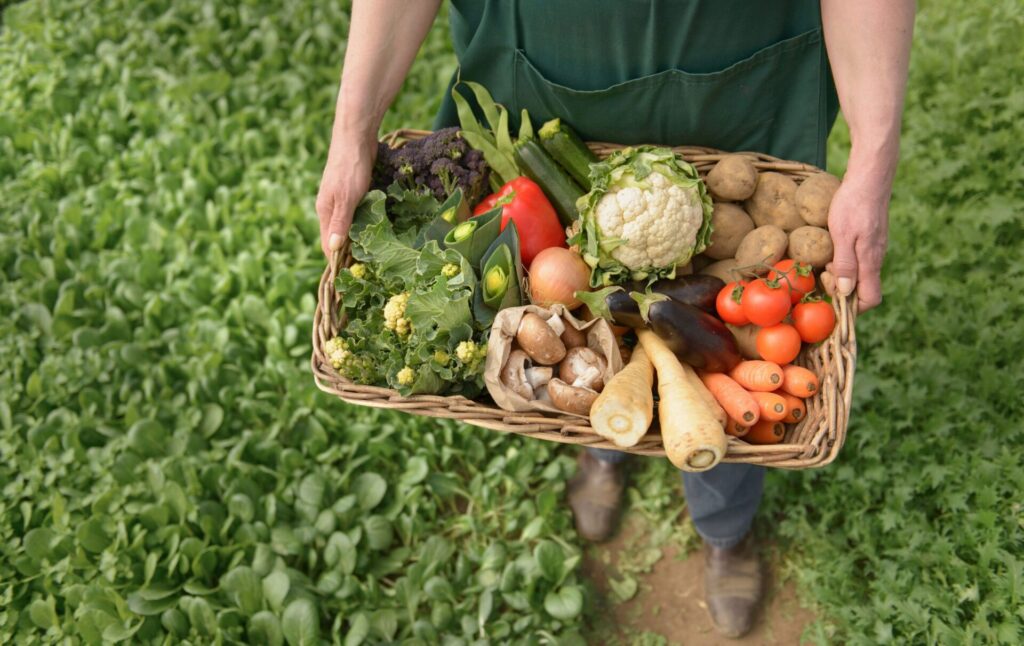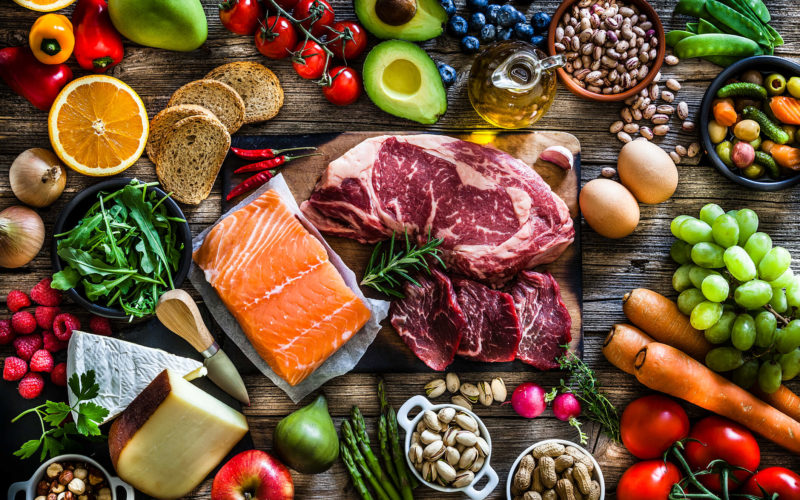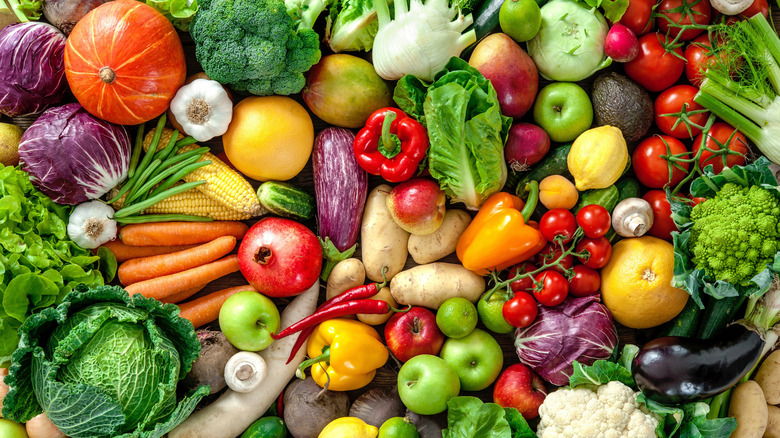In a world where food security and health-conscious choices are increasingly essential, growing your organic food has emerged as a rewarding and environmentally friendly practice. This article explores the various aspects of home gardening, from the initial steps of starting your garden to the numerous benefits that extend beyond just access to fresh, pesticide-free produce. Dive into the world of homegrown organic food and discover how it can enhance your well-being and reduce your ecological footprint.
Eating raw and clean food like this is recommended by general pediatric dentistry in Fayetteville NC as well!
Getting Started: The Basics of Home Gardening
Starting your own organic garden can be a fulfilling endeavor, whether you have ample outdoor space or just a tiny balcony. Here’s how to begin:

Selecting the Right Location and Soil
Choose a suitable location for your garden, ensuring it receives adequate sunlight. Soil quality is crucial, as it directly impacts plant growth. Invest in good quality organic soil or, if your soil isn’t ideal, consider raised beds or container gardening. Conduct a soil test to identify nutrient deficiencies and amend it as necessary.
Choosing the Right Plants
Select plants that thrive in your region and are well-suited to your local climate. Consider what you enjoy eating and what grows well in your area. Vegetables, herbs, and some fruits are popular choices for home gardens. Starting with easy-to-grow varieties can boost your confidence and ensure a successful start.
Planting and Maintenance
Plant your chosen crops at the appropriate time of the year, following spacing and depth recommendations. Watering, weeding, and providing proper care are essential for healthy growth. Organic gardening practices avoid synthetic pesticides and fertilizers, opting for natural alternatives like compost, mulch, and companion planting. Additionally, if you have trees on your property that require maintenance, consider hiring a professional tree service in Maryland to ensure their health and safety.
The Benefits of Homegrown Organic Food
Beyond the pleasure of watching your garden flourish, there are numerous benefits to growing your own organic food:
Health Benefits
- Nutrient-Rich Food: Homegrown organic produce tends to be richer in nutrients compared to store-bought counterparts, which may have been in transit for an extended period. Freshly harvested fruits and vegetables are at their peak in terms of vitamins and minerals.
- Pesticide-Free: By cultivating your food, you have complete control over the use of pesticides. Organic gardening eliminates the need for harmful chemicals, ensuring that your food is free from synthetic residues.
- GMO-Free: Growing your own food allows you to avoid genetically modified organisms (GMOs). You have the autonomy to select non-GMO seeds and maintain their purity.
Environmental Benefits
- Reduced Food Miles: Homegrown food drastically reduces the carbon footprint associated with your meals. With no need for long-distance transportation, you contribute to lower greenhouse gas emissions.
- Biodiversity Support: Home gardens can serve as a haven for beneficial insects, pollinators, and other wildlife. Diverse plantings can encourage biodiversity and ecological balance.
- Soil Health: Organic gardening practices, such as composting and mulching, promote soil health and fertility, contributing to the overall well-being of the ecosystem.
Economic Benefits
- Cost Savings: While there may be initial investments in seeds, tools, and soil, growing your food can save you money over time. The yield from your garden reduces your reliance on store-bought produce. Did you know that one way to save money while spending time in Bosnia is to rent a car at the car rental in Sarajevo?
- Resilience: Home gardening enhances self-sufficiency and resilience. It provides a degree of food security, especially during times of economic uncertainty or supply chain disruptions.
Connection with Nature
- Stress Reduction: Gardening can be a therapeutic and stress-relieving activity. The act of tending to plants and spending time outdoors promotes mental well-being.
- Educational: Gardening is a valuable educational tool, that teaches you about plant life cycles, ecosystems, and the interconnectedness of the natural world.
Community and Social Benefits
- Sharing and Community Building: Surplus homegrown produce can be shared with friends, family, and neighbors. It fosters a sense of community and strengthens relationships.
- Local Markets and Exchange: Participating in local markets, community gardens, or plant exchange programs can connect you with like-minded individuals and expand your gardening horizons. If you own a market like this and want to boost your business, make sure to contact a video production company in New York and make a video about it so you can share it on socials!
Maximizing Space: Container and Vertical Gardening
Not everyone has access to a vast backyard for gardening. However, limited space should not deter you from enjoying the benefits of growing your own organic food, especially when you can give your urban environment a facelift in San Antonio. Container and vertical gardening techniques can transform even the tiniest spaces into productive gardens.
Container Gardening
Container gardening is ideal for those with balconies, patios, or limited outdoor space. Here’s how to make the most of it:
Selecting Containers: Choose containers of appropriate size, ensuring they have drainage holes. You can use pots, barrels, buckets, or even repurpose items like old tires or crates.
Plant Selection: Opt for compact and dwarf varieties of vegetables and herbs. Consider the plant’s mature size to prevent overcrowding.
Soil and Care: Use high-quality organic soil and maintain consistent watering and feeding schedules. Container plants can dry out more quickly, so regular attention is crucial.
These things can be seen in the gardens of luxury vacation rentals as well!
Vertical Gardening
Vertical gardening is an ingenious way to maximize space by growing plants upward. It’s perfect for small yards or urban environments. Here’s how to get started:
Vertical Structures: Set up trellises, wall-mounted planters, or hanging containers to support your plants. Ensure they receive enough sunlight.
Plant Selection: Vining plants like tomatoes, cucumbers, and beans are excellent candidates for vertical gardening. Consider herbs and strawberries as well.
Maintenance: Regularly tie up or train vines to grow vertically. Provide adequate support for heavy fruiting plants.
Harvesting Your Bounty: Tips for Success

As your organic garden flourishes, the time comes to enjoy the fruits of your labor. Here are some tips for a successful harvest:
Timing: Harvest your crops at the peak of ripeness. This ensures the best flavor and nutritional content. Different vegetables and fruits have distinct signs of readiness, so research the specific requirements for each. When it comes to growing your own produce, the importance of timing, much like a veteran clothing collector’s discerning eye for quality, cannot be underestimated.
Tools: Use the right tools for the job. Invest in quality pruners, scissors, or shears to avoid damaging plants and produce during harvesting.
Storage: Store harvested produce properly to maintain freshness. Some items, like tomatoes and basil, are best enjoyed immediately, while others, like root vegetables and apples, can be stored in cool, dark places.
Preservation: If your garden produces more than you can consume immediately, consider preservation methods like canning, freezing, or drying to enjoy your harvest throughout the year.
Seed Saving: To perpetuate your homegrown organic garden, consider seed saving. This practice involves collecting and storing seeds from your plants for future planting seasons, while also exploring eco-friendly packaging products to ensure sustainability in your gardening endeavors.
Embrace the Joy of Home Gardening
Home gardening is not just a practical way to source organic food; it’s a lifestyle that promotes sustainability, self-sufficiency, and a deeper connection with the natural world. Whether you have a sprawling backyard or a small balcony, growing your own organic food is a rewarding and environmentally conscious choice. It empowers you to take control of what you eat, reduce your ecological footprint, and savor the delights of fresh, pesticide-free produce. So, roll up your sleeves, grab your gardening tools, and embark on a journey of cultivation, nurturing, and bountiful harvests.
Gardening for All Seasons
Home gardening need not be limited to just the warm months. With careful planning and the right techniques, you can extend your gardening efforts to all seasons, ensuring a year-round supply of organic goodness. Additionally, maintaining your health with practices like mobile IV therapy can provide you with the energy and vitality needed to tend to your garden year-round.
Winter Gardening
While the idea of gardening in the cold months might seem daunting, it’s entirely possible, even in regions with harsh winters. Here are some strategies for winter gardening success:
Cold Frames and Greenhouses: Cold frames and greenhouses are valuable assets for winter gardening. They create a controlled environment that shields plants from freezing temperatures while allowing sunlight in.
Choose Cold-Resistant Crops: Certain vegetables, such as kale, spinach, and carrots, thrive in cold weather. These “cold-hardy” plants are excellent choices for winter gardening.
Indoor Gardening: For those without outdoor gardening space, indoor gardening using containers and grow lights can provide fresh herbs and greens throughout the winter.
Spring Gardening
Spring marks the beginning of the gardening season for many regions. It’s a time of renewal and growth, and there’s much to be done in the garden:
Crop Rotation: Rotate your crops to prevent soil depletion and reduce the risk of pests and diseases.
Prepare the Soil: Spring is the ideal time to prepare your garden bed for the upcoming growing season. Incorporate compost and other organic matter to enrich the soil.
Plant Cool-Season Crops: In the early spring, you can plant cool-season vegetables like peas, lettuce, and radishes, while also considering a visit to a beauty salon in Toronto to refresh your look for the season.
Summer Gardening
Summer is the high season for gardening, and it’s a time when many warm-weather crops flourish. Here’s how to make the most of the summer months:
Watering: Adequate watering is crucial during the hot summer months. Consider using soaker hoses or drip irrigation to ensure consistent moisture.
Mulching: Apply mulch to conserve soil moisture and prevent weed growth. Mulch also helps regulate soil temperature.
Pest Control: Keep an eye out for garden pests like aphids and caterpillars. Utilize organic pest control methods to protect your plants.
Fall Gardening
As summer fades into fall, there’s still plenty of gardening to be done. Fall gardening offers a unique set of opportunities and challenges:
Late-Season Planting: In late summer and early fall, you can plant crops like broccoli, kale, and garlic for a fall harvest.
Harvest and Storage: Harvest any remaining summer crops before the first frost. Many crops can be stored for extended periods, allowing you to enjoy homegrown produce throughout the winter.
Prepare for Next Year: Fall is also an excellent time to prepare your garden for the following year. Clean up the garden, add compost, and cover it with mulch to protect the soil during the winter. Consider incorporating ice cream cone edibles into your garden to add a touch of whimsy and flavor to your outdoor space this fall.
The Future of Home Gardening

The practice of home gardening is not only ancient but also dynamic. It continues to evolve with changing lifestyles, technological advancements, and environmental awareness. Applying these tips and tricks in your environment, you’ll have more time for relaxing at the health and wellness center in Nolensville TN! As we look to the future, several trends and innovations are poised to shape the world of home gardening:
Smart Gardening: The integration of technology into home gardening is becoming more prevalent. Smart sensors, mobile apps, and automated irrigation systems help gardeners monitor and care for their plants more efficiently.
Vertical Farming: Vertical farming techniques, initially developed for urban agriculture, are finding their way into home gardening. These methods maximize space and resource use, making it easier for city dwellers to grow their own food.
Hydroponics and Aeroponics: Soilless gardening methods like hydroponics and aeroponics are gaining popularity. These systems allow for year-round cultivation of a wide range of plants and can be more water-efficient.
Community Gardening: Community gardens continue to thrive, providing opportunities for urban and suburban residents to share garden space, resources, and knowledge. This communal approach fosters a sense of unity and promotes sustainable practices.
Sustainable Practices: Home gardeners are increasingly adopting eco-friendly and sustainable practices. They prioritize organic gardening, composting, and using native plants to support local ecosystems.
